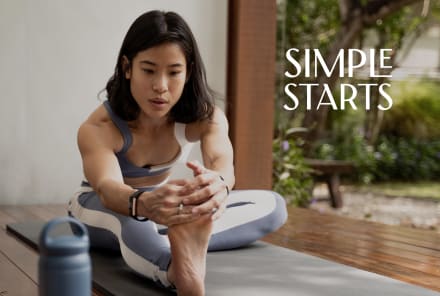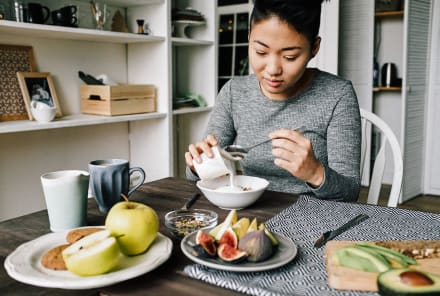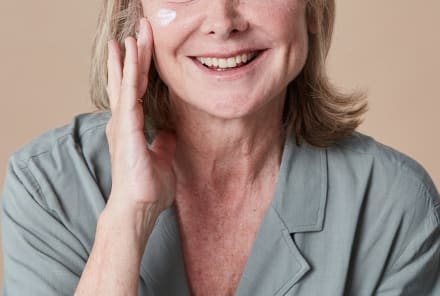Advertisement
We’re Redefining The Meaning Of Strength & Women’s Health


Every decade, society has a changing opinion on women’s bodies—and has offered a slew of (rather destructive) advice on achieving the best one. The 70s were all about quick weight loss and appetite suppressants, the 80s glorified cardio to “shape-up,” the 90s revered a waif-like skinniness, and the 2000s wanted it all (curvy yet slim) by promoting low-fat, low-carb. Each phase was driven by vanity and with no regard to physical, and especially mental, health. But the conversation is changing.
Over the last several years, we’ve seen women begin to fill up their plates, pick up the heavy weights, and step into their power. This was on full display during the 2024 Olympics. We witnessed women performing at the top of their game (bringing home 26 gold medals), acknowledging and honoring their mental health (thank you, Simone Biles), and lifting up their peers (looking at Katie Ledecky and Ariarne Titmus).
At home, I think we felt a collective awe at all women are capable of when we build ourselves up, when we embrace the process of growing into our most resilient selves, and when we cultivate strength.
Meet the experts
Kelly LeVeque
Kelly LeVeque is a holistic nutritionist, wellness expert, and celebrity health coach. Guided by a practical and optimistic approach, she helps clients develop sustainable habits to live a healthy and balanced life.
Ellen Vora M.D.
Ellen Vora, M.D. is a board-certified psychiatrist, acupuncturist, and yoga teacher, and she is the author of the No. 1 bestselling book The Anatomy of Anxiety. She takes a functional medicine approach to mental health—considering the whole person and addressing imbalance at the root.
Suzanne Gilberg-Lenz M.D.
Suzanne Gilberg-Lenz, M.D. is board certified in OB/GYN and integrative medicine. She's a renowned speaker and advocate for women’s health and author of the book "Menopause Bootcamp". Gilberg-Lenz is also the Chief Medical Correspondent for The Drew Berrymore Show.
Shifting to a mindset of more
At mindbodygreen, we believe that cultivating strength lays the foundation for a long, healthy, and joyous life. It’s not about what we have to lose anymore; it’s about what we have to gain. Gaining muscle—growing stronger—requires a lot of inputs, including how you fill your plate.
Although much of the nutrition advice over the years has focused on severely restricting food intake, it’s not possible to grow in a deprived state.
“When you think about the world of calorie restriction or calorie-based diets, the goal is not to hit that threshold—and it makes us feel guilty and shameful when we do surpass it,” says clinical nutritionist Kelly LeVeque.
Instead, LeVeque emphasizes and embraces shifting to a mindset of more with her female clients. “It's about building and attaining versus restricting and punishing. Not only does that change the mindset and give us food freedom, it gives us what we need for those inputs for building strength in our body physically and energetically.”
Eating for a stronger body
Protein is one of the biggest nutritional inputs LeVeque works with her clients on.
“Protein is finally having the moment it deserves when it comes to building a strong resilient, balanced body,” asserts LeVeque. Because no matter your lifestyle, we all need the same nine essential amino acids: histidine, isoleucine, leucine, lysine, methionine, phenylalanine, threonine, tryptophan, and valine.
These amino acids not only make up our muscles and tissues, but they impact everything from digesting food the right way to producing the hormones we need to feel our best. Getting in the nitty gritty, biochemistry of it all, LeVeque specified that phenylalanine is a precursor to dopamine1, tryptophan is the precursor to serotonin and melatonin, and leucine is needed for muscle protein synthesis.
When I think about what strong women are doing, they are not only focused on the attainment of the things their body needs [hours off your phone, time in nature, sleeping well], they're focused on getting those essential amino acids.
“When I think about what strong women are doing, they are not only focused on the attainment of the things their body needs [hours off your phone, time in nature, sleeping well], they're focused on getting those essential amino acids,” says LeVeque
And that means being intentional about including high-quality protein on the plate (think lean red meat, poultry, seafood, and dairy).
Everyone’s protein needs vary slightly. Here’s a guide to help you calculate how much protein you would benefit from.
Moving for a stronger body
Eating protein is also one of the two main stimulants for muscle protein synthesis—the creation of new muscle tissue. The other is strength training.
Lifting, pulling, or pushing heavy things is needed to build lean muscle and strength, and it’s truly the only way to build muscle after menopause. (Whereas excessive cardio paired with a calorie deficit often results in muscle breakdown).
And there are so many benefits to having more muscle mass.
- Bone health: One in three women2 over the age of 50 have osteoporosis. Low muscle mass3 and strength increases the likelihood of developing the disease, whereas having more muscle mass is protective4. Why? Well, strength training also increases bone mineral density5 (at any age6) and improves balance and stability7 to prevent falls (which impact 18-31% of middle-aged women8.
- Better blood sugar balance: Muscle improves the ability to regulate blood sugar levels by enhancing insulin resistance9. “Lean muscle is the only level you can pull outside of food that helps support blood sugar balance,” says LeVeque. “We know that the best thing that you can do for any type of hormonal shifts—whether induced by pregnancy, postpartum, perimenopause, or menopause—is blood sugar balance and holding on to lean muscle mass.”
- Heart health: About 44% of women in the U.S.10 are living with some form of heart disease, and it’s currently the leading cause of death for women globally. Strength training can help lower blood pressure and improve lipid levels (by increasing HDL cholesterol and lowering triglycerides), all of which are known risk factors for heart disease.
- Metabolism: Muscle is more metabolically active11 than fat—meaning the more muscle you have, the more calories you burn at rest. In turn, this contributes to better blood sugar balance and cholesterol support. It also makes it easier to maintain a healthy weight and improve body composition (the ratio of lean mass to fat mass). Traditional low-calorie, high-cardio diets deteriorate your muscle mass (as they likely don’t meet even your basic energy or protein needs) which in turn slows your metabolic rate.
Overall, the American College of Sports Medicine12 recommends everyone include at least two days of strength training a week—that work all major muscle groups (i.e. glutes, hamstrings, back, abdomen, shoulders, etc.). But the duration of the session, the number of reps, and the degree of resistance varies by person. If you’re not sure where to start, check out our comprehensive guide to strength training here.
A strong body paves the way for a strong mind
Physical strength and muscle mass also affect mental health.
One of the most important things we need to start recognizing that mental health is physical health.
“One of the most important things we need to start recognizing that mental health is physical health,” says psychiatrist and functional medicine practitioner Ellen Vora, M.D. “The brain is a piece of flesh and organ, living in the conditions of our physical body. If we are inflamed, tired, or deficient in certain nutrients or calories, all of this will impact our body and directly impact our brain. And that can show up as mental health.”
Vora emphasizes that physical health (strength, lifting heavy, gaining muscle) creates the conditions needed for better mental health.
“Strong feels good. Strong feels powerful. It’s a two-way street in how we carry ourselves through the world,” says Vora. “When we get stronger, when our core is stronger, when our back is stronger, we create conditions for a deeper breath, which directly impacts the brain and allows us to walk through the world in a way in which we feel a sense of dignity and pride.”
It’s never too late (or early) to make a change
It’s possible to get stronger at any age.
“Mid-life women are often sandwiched between societal pressures and expectations, caregiving, family commitments, and community. Working on ourselves is last—or not even on—our to-do list,” says Suzanne Gilberg-Lenz, M.D., author of The Menopause Bootcamp. “But there is always time for us to improve. Sometimes we need our asses kicked to pay attention to ourselves.”
For many women, perimenopause and menopause and the often subsequent brain fog, increase in fat accumulation, or concerns with blood sugar or cholesterol act as that catalyst.
Sometimes we need our asses kicked to pay attention to ourselves.
“I see that often as a practicing M.D. and a menopausal woman,” says Gilberg-Lenz. “The way we navigate these challenges [of menopause] is often how we develop a sense of our own strength. We made it. We survived. And we maybe even thrived. Any time we learn, we can grow. And anytime we're committed to our healthspan is the right time.”
And now, many teenagers also believe it’s the right time to approach healthy aging. Recently, a survey of 550 13 to 17-year-olds in the U.S. was conducted to understand perceptions of aging. Surprisingly, 42% of this group cited fear of physical limitations of strength as a primary fear of aging and 64% said their first steps to combat aging would be eating healthy and exercising.
As both bone and muscle mass peak in early adulthood (in the 20s or 30s), taking steps to improve strength earlier in life can have long-term benefits.
Redefining a strong woman
So is a strong woman defined by how much weight she can lift? How lean she is? What percent of her body mass is muscle? Our answer (and the answers from our experts) is a resounding no.
It’s true that gaining physical strength and building muscle mass will be one thing in life you won’t regret. But those physical feats look different for everyone—all bodies can’t (and shouldn’t) be molded to a single standard. Instead, a strong woman comes in many forms. Our experts agree that it often stems from learning to love the process of self-discovery.
A strong woman “Is one who is willing to just show up for herself and others—and you most authentically show up for others when you care for yourself,” says Gilberg-Lenz.
A strong woman “Is one who is grounded in self-acceptance and self-love, who navigates the world with curiosity, connection, and collaboration. She is one who feels connected to her intuition and magic and lives in that unapologetically,” says Vora.
A strong woman “Is one who sets boundaries for herself. She is constantly getting to know herself and asking questions to help define what she needs,” says LeVeque.
When women come together, support each other, and amplify our stories, we can change the narrative of women's health. We can lean into building our bodies, minds, and spirits up—rather than breaking them down.
12 Sources
- https://pubmed.ncbi.nlm.nih.gov/7766968/
- https://www.ncbi.nlm.nih.gov/books/NBK559156/
- https://www.sciencedirect.com/science/article/abs/pii/S0378512219308357
- https://www.ncbi.nlm.nih.gov/pmc/articles/PMC9524880/
- https://www.ncbi.nlm.nih.gov/pmc/articles/PMC6279907/
- https://www.frontiersin.org/journals/physiology/articles/10.3389/fphys.2023.1105303/full
- https://www.ncbi.nlm.nih.gov/pmc/articles/PMC10048873/#:~:text=Forte%20et%20al.,of%20falling%20in%20older%20adults.
- https://www.ncbi.nlm.nih.gov/pmc/articles/PMC8419846/
- https://www.ncbi.nlm.nih.gov/pmc/articles/PMC8074531/
- https://www.cdc.gov/heart-disease/about/women-and-heart-disease.html#:~:text=Overview,affect%20women%20at%20any%20age.
- https://www.ncbi.nlm.nih.gov/pmc/articles/PMC3661116/
- https://pubmed.ncbi.nlm.nih.gov/21694556/
Watch Next
Enjoy some of our favorite clips from classes
Enjoy some of our favorite clips from classes
What Is Meditation?
Mindfulness/Spirituality | Light Watkins
Box Breathing
Mindfulness/Spirituality | Gwen Dittmar
What Breathwork Can Address
Mindfulness/Spirituality | Gwen Dittmar
The 8 Limbs of Yoga - What is Asana?
Yoga | Caley Alyssa
Two Standing Postures to Open Up Tight Hips
Yoga | Caley Alyssa
How Plants Can Optimize Athletic Performance
Nutrition | Rich Roll
What to Eat Before a Workout
Nutrition | Rich Roll
How Ayurveda Helps Us Navigate Modern Life
Nutrition | Sahara Rose
Messages About Love & Relationships
Love & Relationships | Esther Perel
Love Languages
Love & Relationships | Esther Perel
What Is Meditation?
Box Breathing
What Breathwork Can Address
The 8 Limbs of Yoga - What is Asana?
Two Standing Postures to Open Up Tight Hips
How Plants Can Optimize Athletic Performance
What to Eat Before a Workout
How Ayurveda Helps Us Navigate Modern Life
Messages About Love & Relationships
Love Languages
Advertisement
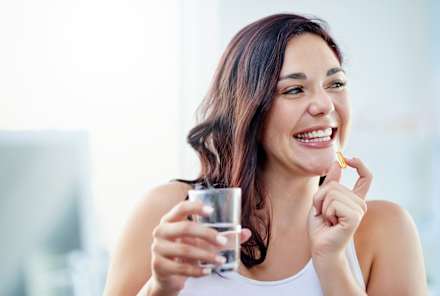
Research Calls Out Concerning Potential Side Effects Of Melatonin
Gretchen Lidicker, M.S.
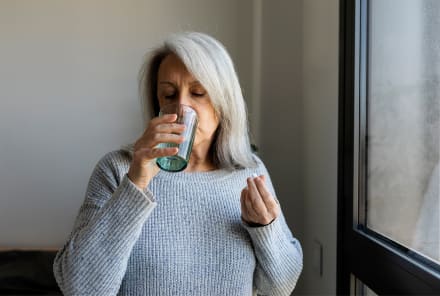
This Supplement May Remarkably Benefit Those With A High Risk Of Alzheimer’s
Molly Knudsen, M.S., RDN

Research Calls Out Concerning Potential Side Effects Of Melatonin
Gretchen Lidicker, M.S.

This Supplement May Remarkably Benefit Those With A High Risk Of Alzheimer’s
Molly Knudsen, M.S., RDN

Research Calls Out Concerning Potential Side Effects Of Melatonin
Gretchen Lidicker, M.S.

This Supplement May Remarkably Benefit Those With A High Risk Of Alzheimer’s
Molly Knudsen, M.S., RDN

Want To Be Metabolically Healthy? Study Shows An Underutilized Approach
Molly Knudsen, M.S., RDN

Research Calls Out Concerning Potential Side Effects Of Melatonin
Gretchen Lidicker, M.S.

This Supplement May Remarkably Benefit Those With A High Risk Of Alzheimer’s
Molly Knudsen, M.S., RDN

Want To Be Metabolically Healthy? Study Shows An Underutilized Approach
Molly Knudsen, M.S., RDN
